Abstract
Among women, African Americans are at the highest risk for contracting the human immunodeficiency virus (HIV). Unfortunately, the majority of African-American women do not perceive themselves to be at risk nor perceive the need to engage in safe-sex practices. Given the alarming rate of increase of HIV disease among African-American women, more in-depth information about the sociocultural factors influencing these nonhealth-promoting beliefs and behaviors is needed immediately in order to design effective Information, Education, Communication campaigns. As part of such an effort, a premarketing study of the recently developed female condom, Reality (Wisconsin Pharmacal, Jackson, Wisconsin), was used as an opportunity to assess not only acceptance and relevance of the product, but also knowledge, attitudes, and practices among a group of African-American women in New Orleans. The methodology chosen was focus group discussions. The main finding from these discussions is that the previously reported low-risk perception of HIV disease among African-American females is also true among this group. The discussions suggest that cultural norm of female submission and passivity in sexual negotiation is a major barrier to preventive actions among these African-American women, ie, insistence on condom use during sexual intercourse [corrected]. The second important finding from these focus group discussions is that the women enthusiastically endorsed the female condom because they felt this condom allowed them control over safe-sex practices without having to challenge the power of their male partners. This study also demonstrates that the dynamics of universality and interpersonal learning inherent to insight-oriented or support groups can also be present.(ABSTRACT TRUNCATED AT 250 WORDS)
Full text
PDF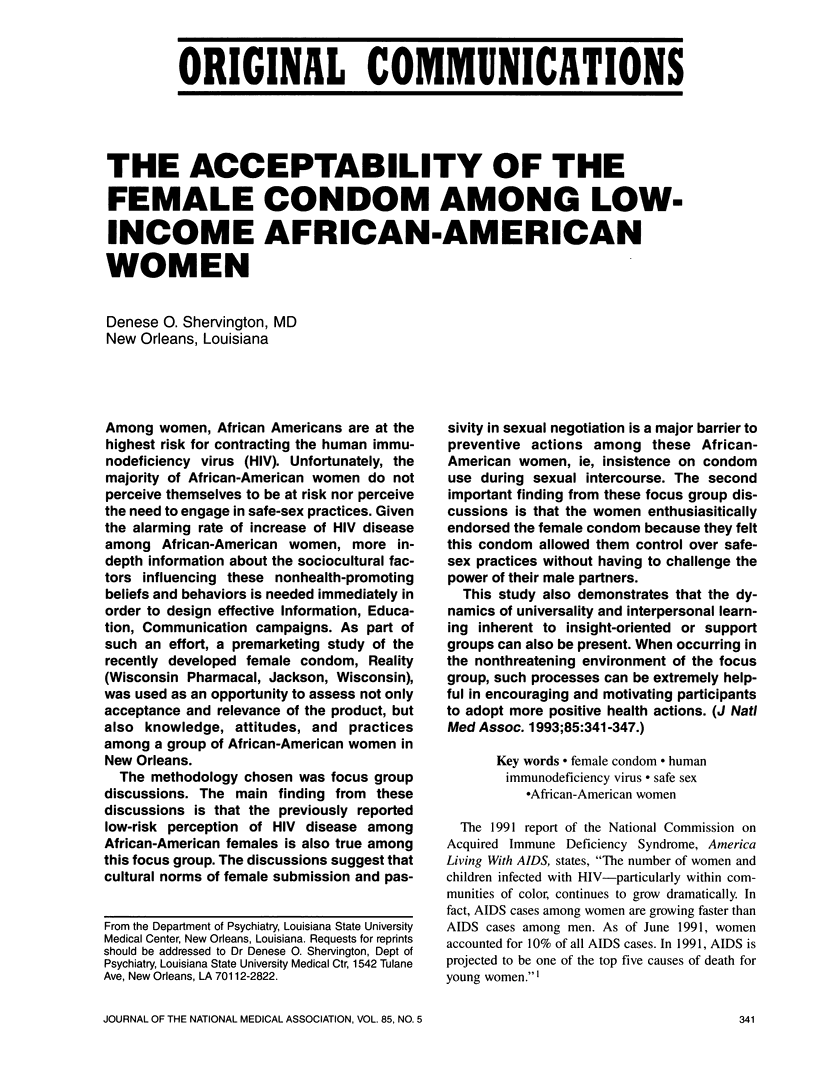
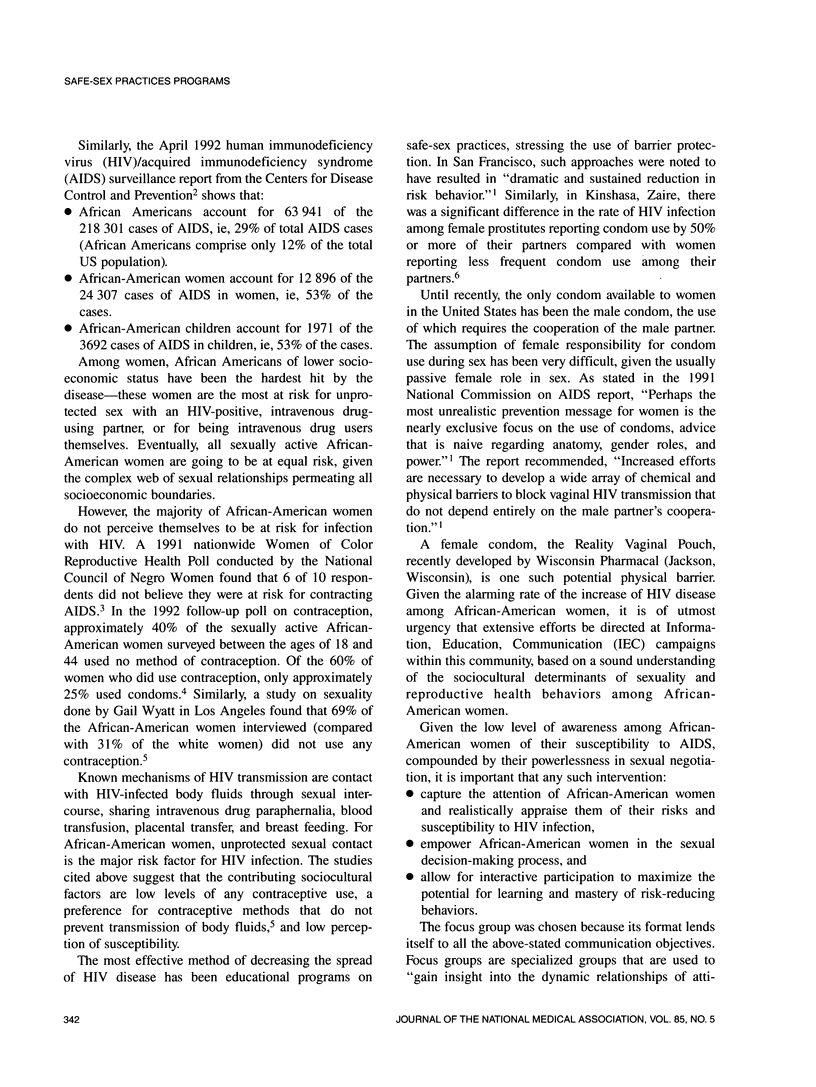
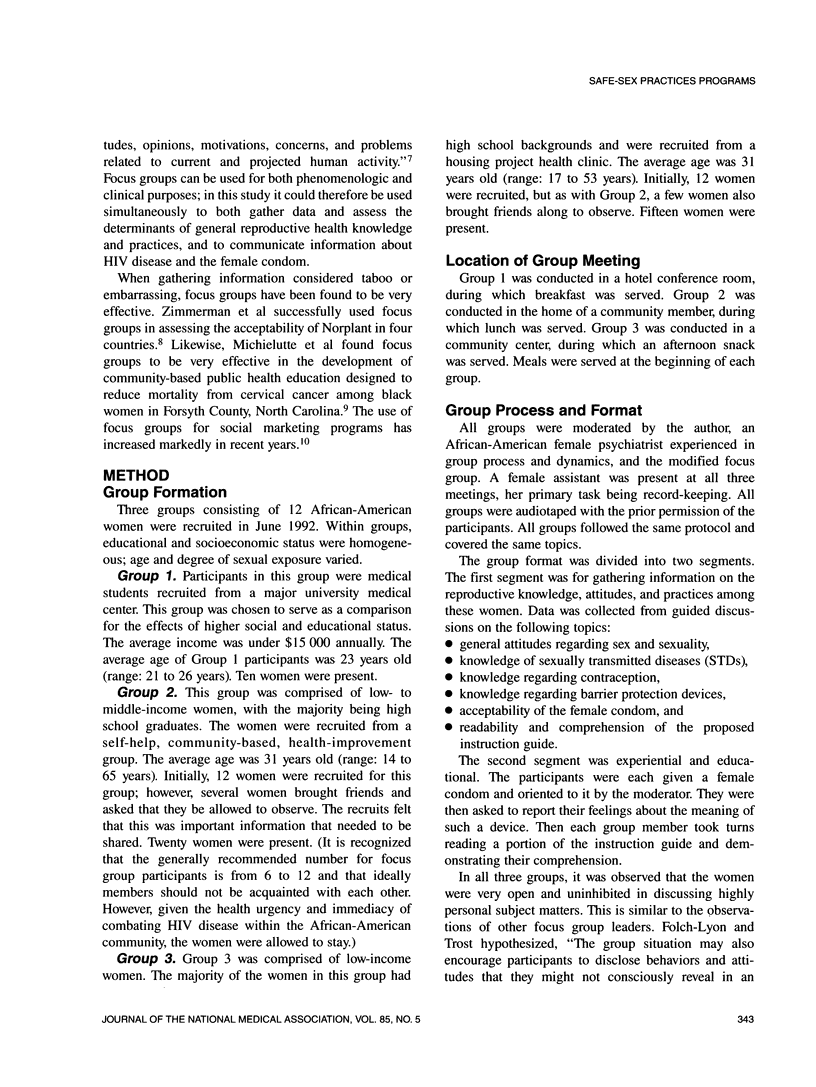
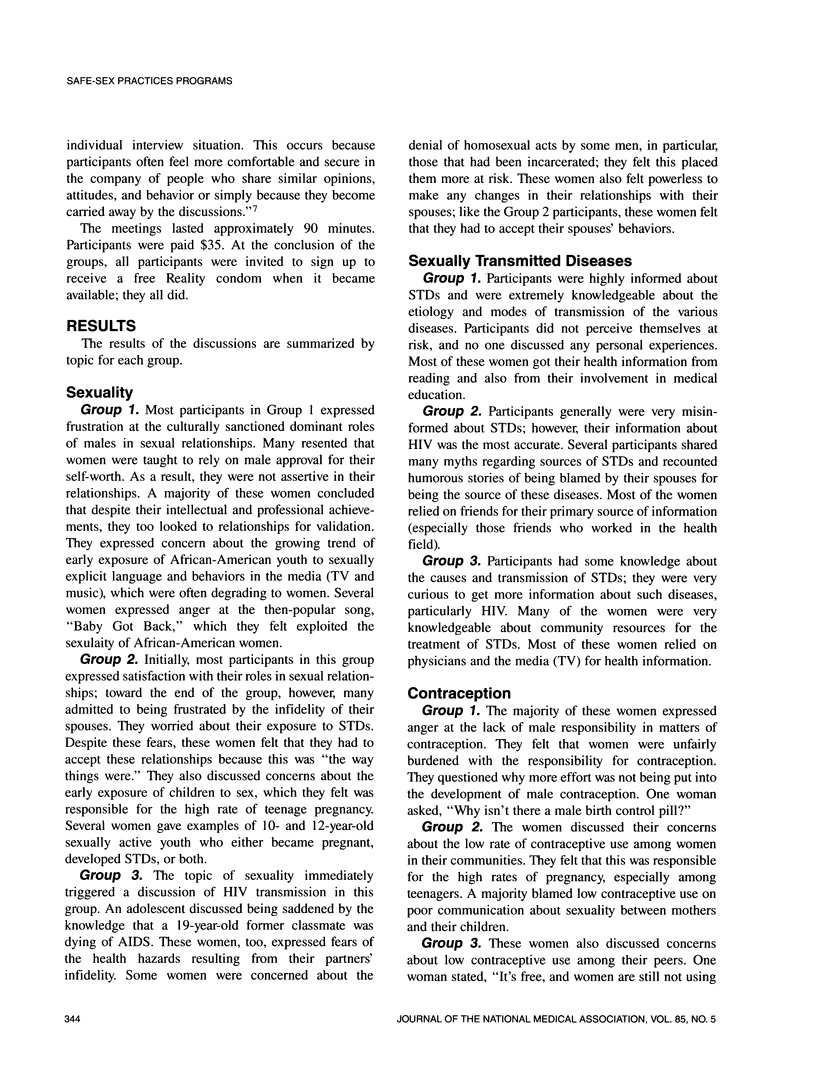
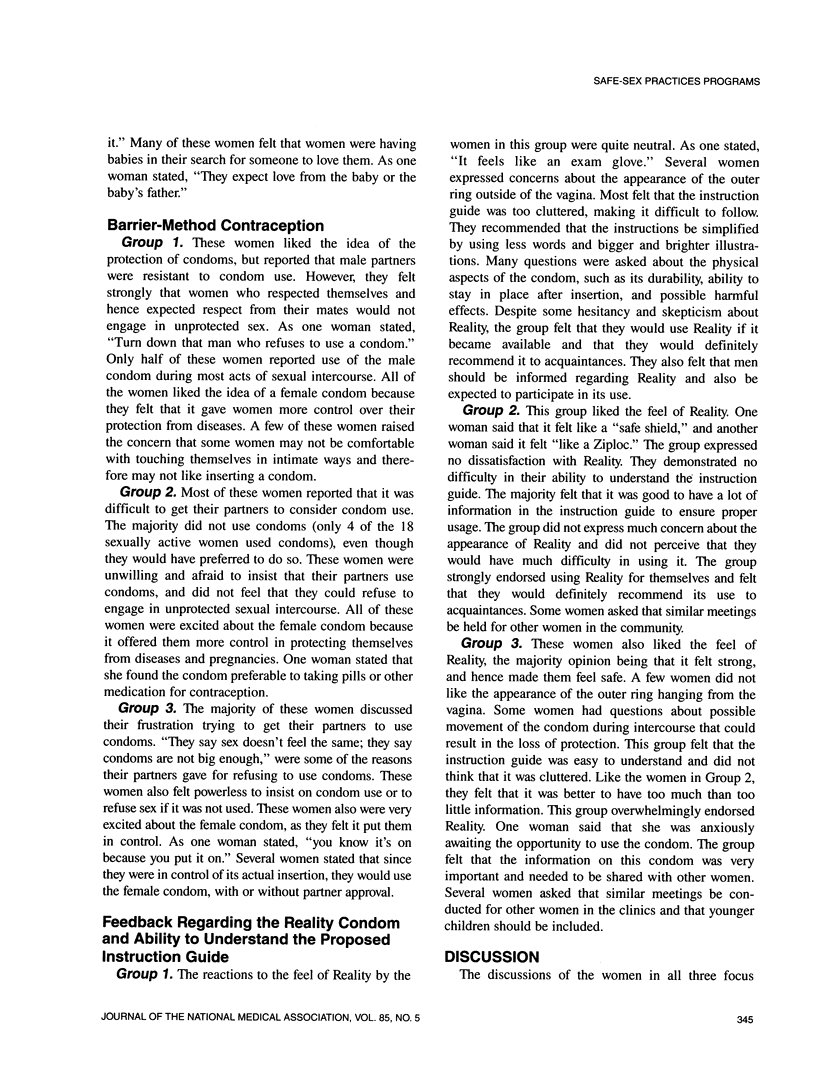
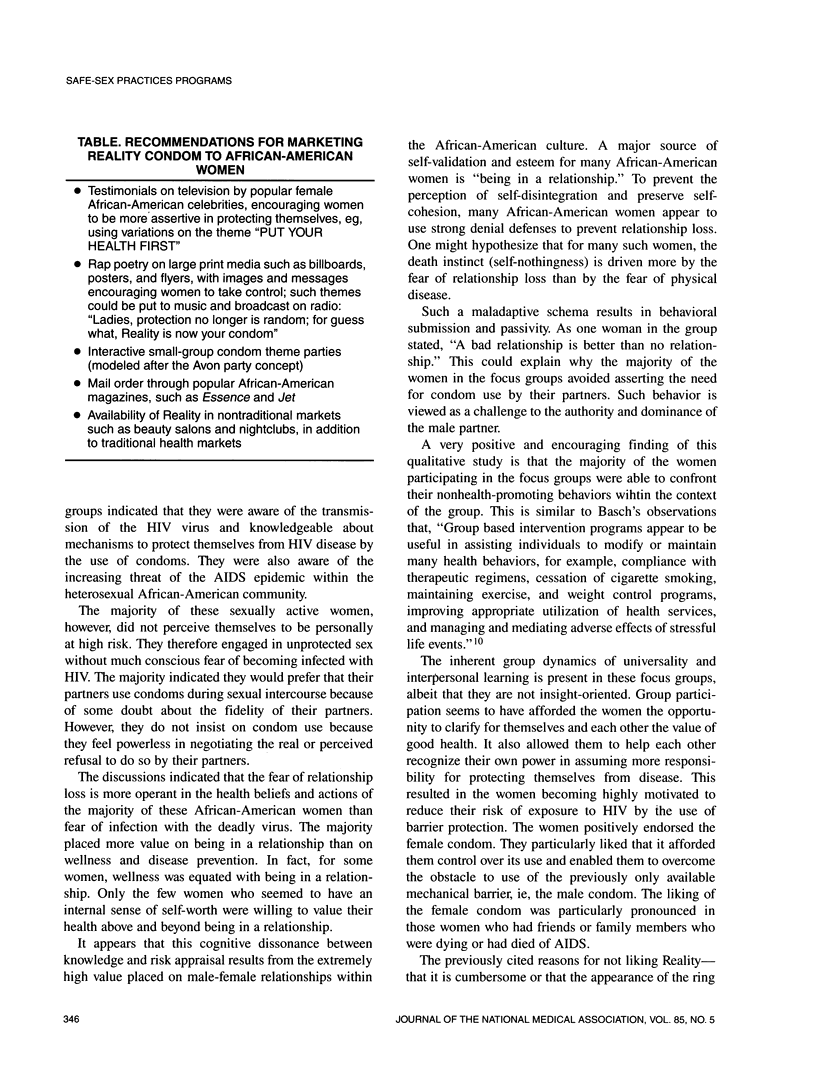
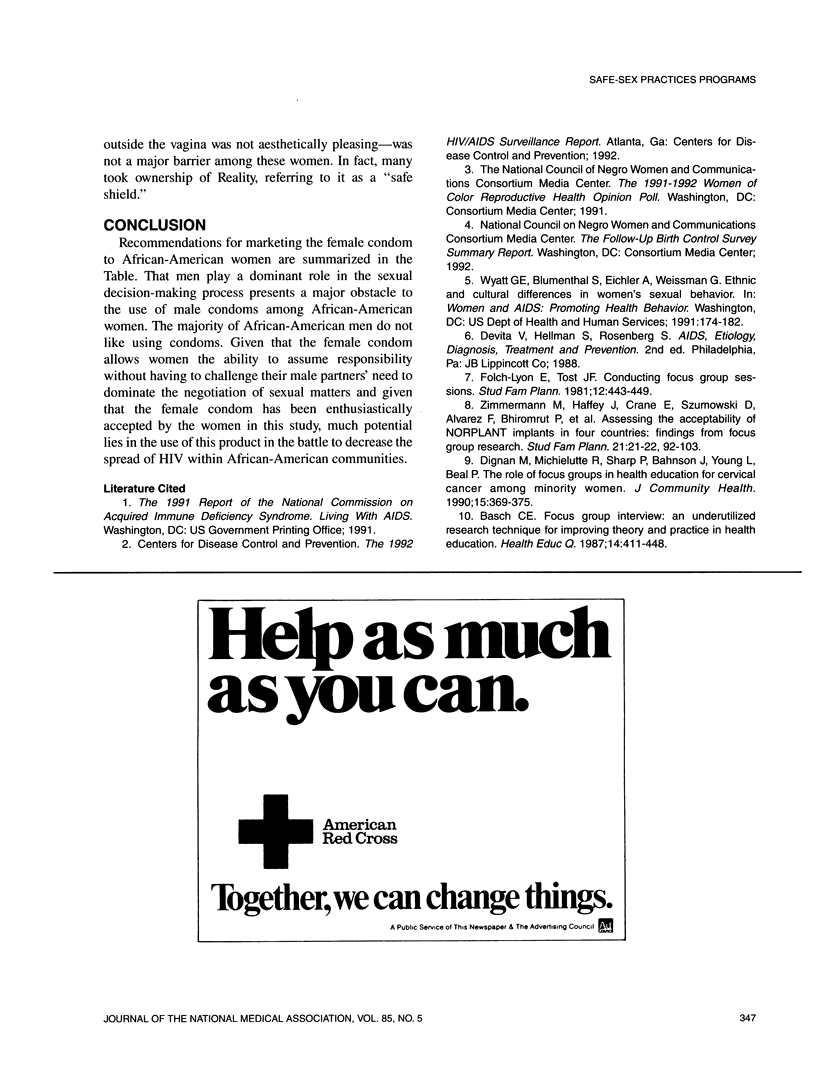
Selected References
These references are in PubMed. This may not be the complete list of references from this article.
- Dignan M., Michielutte R., Sharp P., Bahnson J., Young L., Beal P. The role of focus groups in health education for cervical cancer among minority women. J Community Health. 1990 Dec;15(6):369–375. doi: 10.1007/BF01324299. [DOI] [PubMed] [Google Scholar]
- Folch-Lyon E., Trost J. F. Conducting focus group sessions. Stud Fam Plann. 1981 Dec;12(12 Pt 1):443–449. [PubMed] [Google Scholar]
- Zimmerman M., Haffey J., Crane E., Szumowski D., Alvarez F., Bhiromrut P., Brache V., Lubis F., Salah M., Shaaban M. Assessing the acceptability of NORPLANT implants in four countries: findings from focus group research. Stud Fam Plann. 1990 Mar-Apr;21(2):92–103. [PubMed] [Google Scholar]


